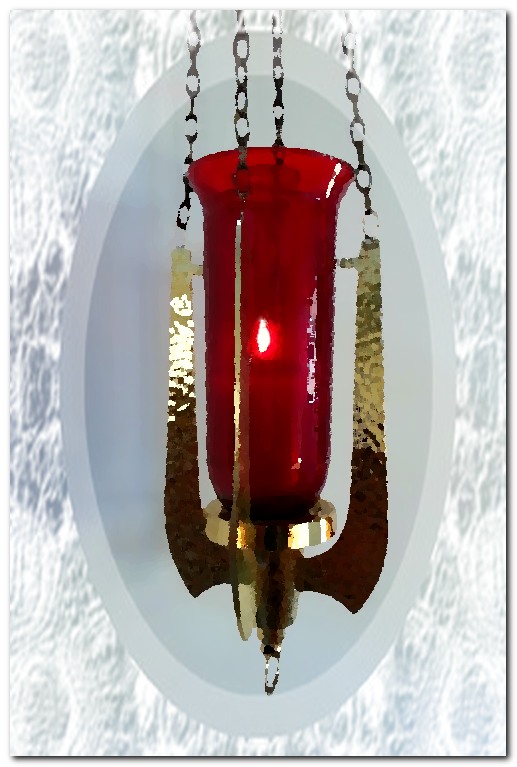
Within Lutheran churches, special lights for worship have always been incorporated into the liturgical appointments. The most common and ceremonial lights in the church is the candle. One of the primary uses of candles, especially before the invention of the light bulb, was practical: so that people could see in the dark. But the symbolic use of lights, a symbolism with has its roots in the Old Testament, is also important. For Christians, the main symbolism for lights used in a church is derived from the statement of Jesus, “I am the Light of the world” (John 8:12). Thus all lights used point us to God and Christ as the true light of the world.
Most churches have at least two candles placed upon
the altar. These candles are called Eucharistic lights because they are lit
whenever the Service of the Sacrament of the Altar is celebrated. Since lights are symbolic of God and Jesus
Christ as the Light of the world, it is certainly appropriate to light them
every Service, especially if they are the only candles in the chancel. Often times, churches will also have candelabras which hold three,
five, or seven candles which are sometimes referred to as office lights, since they are lighted for the Office
(non-Communion) Services. They are
usually places on stands on either sides of the altar or mounted on the wall
behind the altar.
Many candles in the church are also a specific color, which signifies meaning. Typically seen in a Lutheran church is the sanctuary light, sometimes called the eternal light, or eternal flame. This lamp or
candle normally hangs from a wall or the ceiling and is lit continuously
throughout the year (the only common exception being from 3 pm on Good Friday until
Easter Vigil’s Service of Light). Most
lamps today have red colored glass, symbolizing the holy spirit, but some may have white or
untinted glass. The light symbolizes the continual presence of God, hence the
name, eternal light.
The lighting of the candles typically occurs 5 minutes before the
Divine Service begins, or during the first hymn. When the Acolyte comes out to light the
candles, this is the signal that the Divine Service is to begin. The congregation’s response to the lighting
of the candles should be one of quiet contemplation focused on the reception of
God’s Word and Sacraments. The
candles are lit from the center top candle down, signifying the Light of the
world who is coming to us in the Divine Service. As they are extinguished, they are done in
reverse, highlighting that our beginnings and endings all focus on the cross of
Christ.
In addition to the regular appointments, a congregation may chose
to use seasonal appointments. One, which uses candles, is the Advent Wreath. Originally,
the wreath was used in the home to count the weeks of Advent with one candle
being lit for each week. The wreath is a circle of evergreen branches with four
candles. A rose colored candle is lighted on the third Sunday; the
others being purple or blue to match Advent’s liturgical color. The Christ candle is the usually the candle
located at the center of the wreath. Hand candles are also used on Christmas
Eve, and the Easter vigil. Often,
overhead lights are dimmed or brightened with the use of hand candles.
Another important candle is the Paschal candle. The use of this candle in the Christian Church goes
back to the 4th or 5th century. The Paschal candle is a symbol of our Lord’s
resurrection and His visible presence here on earth during the following 40
days. It is first lit in the year on the
Vigil of Easter, and remains lit throughout the Easter season. Because of the connection between Easter and
Baptism (Romans 6), many congregations employ the use of the paschal candle for
the Sacrament of Holy Baptism and during a funeral service (symbolizing the
Christian’s baptism into Christ’s death and resurrection). The paschal
candle is usually a large white candle located by the baptismal font, (visually
connecting baptism, death, and resurrection).
note: post 6/11 adapted from my brother's writings
No comments:
Post a Comment